Leather color is considered one of the most difficult in painting because it is difficult to obtain by mixing other pigments. All paints differ in composition, thickness and saturation. To make a flesh tone To draw a portrait, you need to know in what proportions to mix paints, what colors to use and how to make the drawing realistic.
General rules for obtaining flesh color
Experienced artists warn beginners that there is no "recipe" for creating a skin tone with exact proportions of paints of any colors. The shades depend on the color types of the faces of the people you plan to draw, as well as their race.
Also, each artist perceives colors in their own way, and 2 portraits drawn from one photo by different people will differ in color scheme, but will remain similar to the original. There are only general rules that should be followed when drawing color portraits.
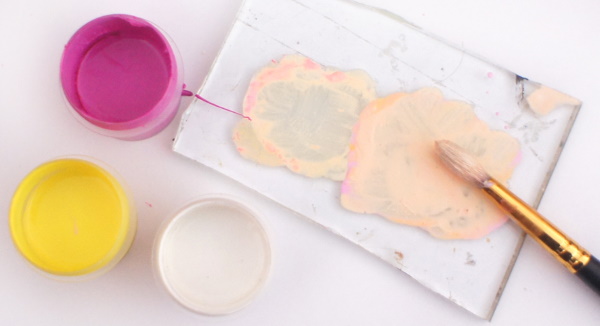
Full list of recommendations:
- When copying a person from a photograph, a copy must be printed and attached to the side of the canvas so that it is always possible to compare the resulting shades with the original.
- The face and other parts of the body cannot be one solid color because they will look too flat, two-dimensional. To achieve volume, you need to mix colors correctly and show shadows, highlights, curves and folds in the drawing.
- The main color of the leather shade is considered to be white. Its addition allows you to make the shades lighter or darker. Everything depends on the proportions. Without white, you can only draw a portrait of a person with watercolors and pencils.
- If there are 2 people in the portrait, it should be taken into account that the skin of men is always darker than that of women. This rule should be followed only if the couple is of the same race.
You can make a beautiful face and body shade in a drawing using paints, observing these conditions. It is also important to know that the skin has the ability to reflect the color of clothes and hats, and its shade depends on the lighting.
Best Color Combinations
It is important for beginning artists to practice getting skin tones before moving on to drawing people's faces and bodies.
In art schools they teach how to mix paints in the following way:
- On a palette, mix yellow and red paint in proportions of 6:1. You should get an orange color.
- To this color you should add half of 1 part blue paint.
- The result should be a brown color, to which you need to add white until the paint reaches the desired shade.
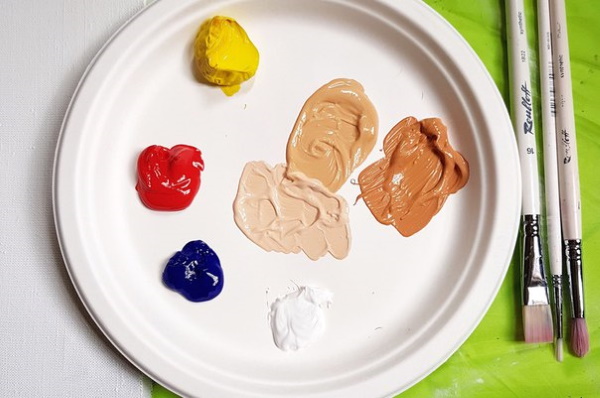
This mixing method is suitable for thick paints such as acrylic, gouache or oil.
For light colors like watercolors, there is another method:
- Dissolve red color in a drop of clean water.
- Add 1 part yellow to the resulting rose water.
- Check on a rough sheet what the shade looks like.
Depending on the result, the color is adjusted by adding yellow, brown or red paint. Experienced artists teach beginners to see more colors in the skin tone than an ordinary person can notice at first glance. In the process of drawing, you will have to add other colors that may seem unnecessary in the picture, but they are what give the image realism.
For example, to show shadows and a cool complexion, blue, black, gray, and purple paints are needed. For warm skin tones, red, yellow, brown, and green colors are needed.
Nuances to consider when mixing colors
Knowing some nuances, the importance of which is confirmed by professionals, will help make the leather color natural:
- Sometimes the color may appear too dark when applied to paper. It is not recommended to add white to a layer that has already been applied to the portrait. This can result in a "dirty" shade or make the transition between layers too clear. Sometimes it is enough to blend the paint with a wet brush.

- In the palette, tones with red pigments that are used for blush may seem darker than necessary. It is worth considering that when drying, some paints become lighter by 2-3 tones, for example, gouache and watercolor.
- For smooth transitions of shadows and highlights, 1 layer of paint is made in a single color and a translucent effect is achieved.
To avoid unique mistakes, before applying each layer of paint, it is necessary to check how it will look on a rough sheet. If the tone is to be applied over a dried layer, then testing is carried out on a dry spot of paint of a suitable shade. Even dry pigments can mix with each other and give an unpredictable result.
Types of flesh color and features of their production
In painting, flesh colors are divided into 3 main types.
The table shows their names and characteristics:
| Skin tone | Signs |
| Light | Light beige or milky complexion, blue or green veins. |
| Average | The face has a yellow, cream or pink tint. Veins are poorly visible. |
| Dark | The skin is terracotta, brown, or has a chocolate tint. Veins are not visible. |
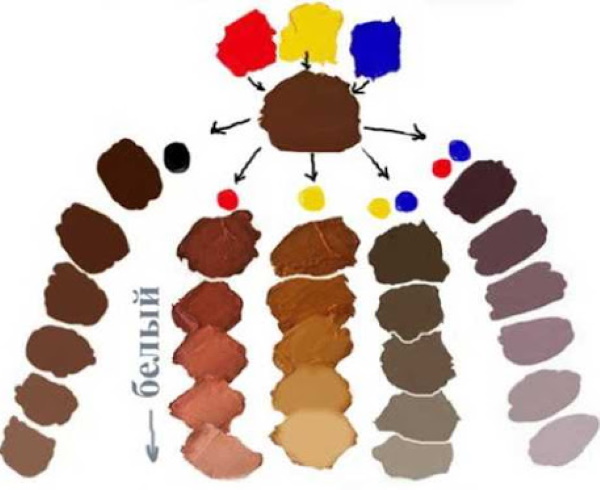
With the help of thick paints, you can create a basic shade for each skin type. It is important to remember that this is only a base. To highlight shadows, highlights and reflections, you need to dilute the base color with other pigments.
Light skin tone
You can make a light-toned leather color in the following way:
- Make orange by mixing 3 parts yellow and 1 part white paint.
- Place 3 parts of white paint on the palette separately from the prepared mixture.
- Add orange pigment to white paint in very small portions, stirring the paint each time until a uniform shade is obtained.
When the color approaches the original, it is necessary to determine the color type of the person's skin in the photo. If the skin is warm, you will need to add red and yellow paint. If the face has a cold shade, then blue, light blue or violet pigment is needed.
Medium skin tone
What colors and shades are most often used to create this skin tone:
- brown, yellow, ocher;
- red, purple, orange;
- blue or yellow, depending on the complexion type.
How to create a base shade:
- On a palette, mix brown and yellow paint in a 2:1 ratio.
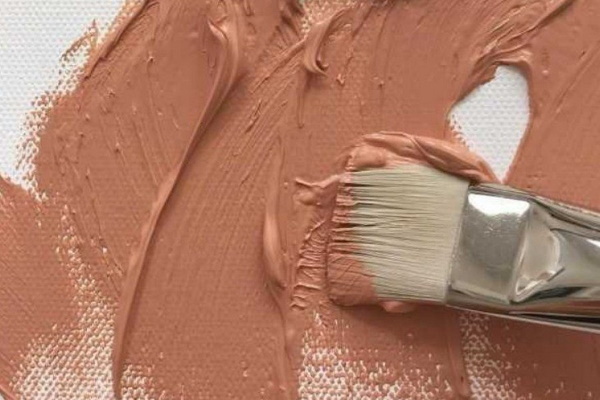
- Separately from this color, mix red and brown colors in a ratio of 1:2.
- Now mix the resulting pigments together in equal parts and add half of 1 part blue paint.
- Add the resulting color in parts to the white paint until you get the desired shade.
If your palette contains paints called sienna and umber, then you can skip step 1 and immediately mix them together in equal parts.
Dark skin tone
You can get a basic shade of dark flesh color in the same way as a medium tone. You will need more brown and less white. Experienced artists also advise adding violet instead of blue. It will make the tone more natural. You need to add this paint drop by drop, dipping the tip of the brush. Each time it should be mixed well with the base color and if there is not enough violet, you can add more.
Shades of flesh color on different parts of the body
People's skin always differs in color on different parts of the body. The base shade is on the cheeks, forehead and chest. In other places, when drawing, the base should be supplemented with other colors. Under the eyes, at the wings of the nose and under the lower lip, the color is always darker than the base. Around the eyes, the tip of the nose, cheekbones - on the contrary, lighter. Cheeks are drawn rosy, adding red or purple pigment to the base color. The neck should be light.

Dark colors are used to indicate the collarbones, chest and stomach relief. The arms and legs should be darker than the rest of the body. The palms and feet are drawn light, as are the inner parts of the arms. The elbows and knees have a reddish tint. The places where a person has more muscles should be warm shades, and where the bones protrude - cold colors.
Getting skin color by mixing paints
You can make a leather color with any paints that combine well with each other. The pigments used to paint portraits differ in consistency and saturation, so each type of paint has its own mixing technology, following these instructions you can get a beautiful flesh tone.
Flesh color in watercolor painting
Watercolor is a light, translucent paint. It is applied in several layers. To make the color of human skin natural, you need to know how to properly combine pigments to get a base.
Step by step instructions:
- You won't need white paint for this work. You'll only need a white palette. You can use white cardboard or watercolor paper.
- Mix red and yellow paint in equal parts.
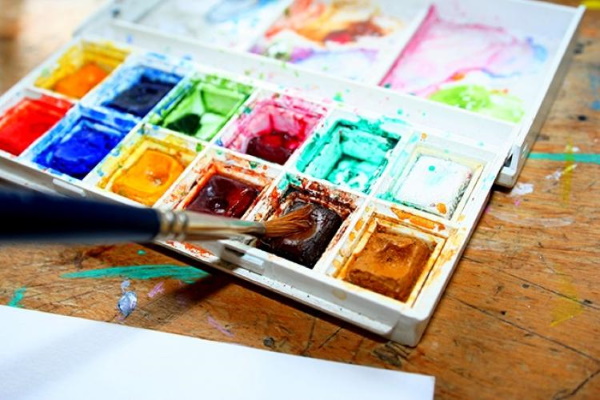
- Dilute the resulting color with water and check how the shade will look after drying.
- To get a cool skin tone, you need to add a little blue at the end of the brush. For a warm tone, you need a drop of ochre.
- For a rosy hue, you can add a little pink.
The paint is applied in a thin, translucent layer. Later, other pigments must be added to the base color to show halftones, shadows, and highlights on the portrait.
How to make skin color with gouache?
Gouache is a thick paint that becomes 1-2 tones lighter when dry. It is important to remember this when mixing colors.
How to make leather color:
- Mix red and yellow to make a bright orange.

- Place white paint on a palette and add orange to it in small drops. Mix the paints each time until a uniform shade is achieved.
- To bring the color closer to the average skin tone, add 2-3 drops of ocher to the resulting light base.
- For dark tones, you need to add more red, a drop of blue and black. On the tip of the brush.
Before painting, make a few strokes on a rough sheet and leave to dry. Gouache may fade and the shade may change.
Flesh tone with oil paints
In the palette of oil paints, all the colors are saturated and have natural, natural shades. After drying, they do not become lighter.
How to get medium skin tone:
- Mix equal parts red, yellow and blue paint to get a dark brown color.
- Now you need to lighten the tone by gradually adding white and yellow.
- When you get the desired shade, you can add a drop of red.
You can lighten the tone with white, and darken it with blue and brown paint. It is important to remember that oil paints mix well with each other, so new colors should be added in very small portions.
When painting with acrylic paints
Acrylic paints are bright and rich.

To get a flesh tone, you need:
- Combine red and orange pigment in equal parts. You will get orange.
- Add blue paint on the tip of the brush, then the same amount of black.
- Mix with 1 part red color.
- Separately combine light brown and ocher in equal parts.
- The resulting dark color is gradually mixed with the first shade.
When you get the right color, you need to try it on a rough sheet. The paint should dry and evaluate the result. If the tone is very dark, you can dilute the color with yellow and white pigment.
How to get flesh color from plasticine?
In craft stores you can buy plasticine of skin color and different tones, but sometimes there is no opportunity to go shopping. In this case, you can mix other colors of plasticine.
How to do it:
- Mash 1 bar of white flour.
- Cut off a small piece, about 1 cm, from the dark pink.
- Cut 1 cm pieces from the pale pink, orange and yellow bars.
- Knead all prepared material.
- Combine all colors into 1 piece and knead until the colors are completely mixed.

Once all the plasticine is mixed, it will become clear which of the above pigments should be added to change the shade.
How to get skin color using pencils?
Pencils do not have the ability to mix with each other and create new colors. All halftones and other shades can be obtained only by shading the image in the right direction. Transitions from color to color are also made with strokes.
How to get skin color:
- Shade the entire portrait with a beige pencil.
- Use brown and orange pencil to mark the areas where there will be shadow.
- Shade the areas of skin folds with a red pencil without pressing.
- Shade the blush areas with a pink pencil.
- Paint the remaining areas with beige.
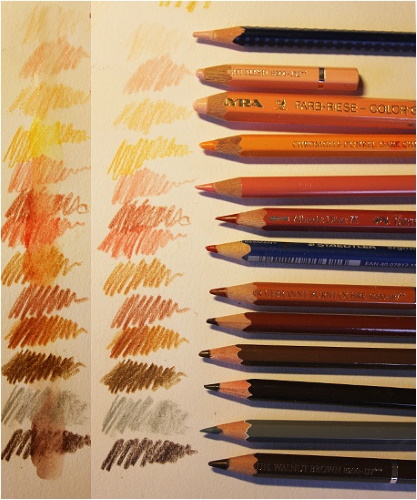
When drawing a portrait with pencils, you can adjust the color saturation. Where the shade should be brighter, you need to press harder on the pencil, in places where the skin should be pale, you do not need to press on the pencil at all. You can make a leather color by mixing any paints. The skin has other shades in different parts of the body, and it is not enough to paint the drawing with only a base layer. By experiment, you need to add other pigments to the base to ultimately get a realistic and beautiful drawing.
Video on how to make leather color
How to mix flesh color using paint:
